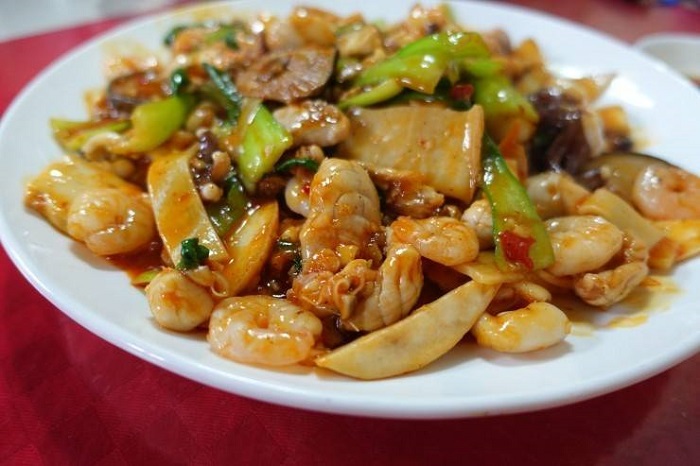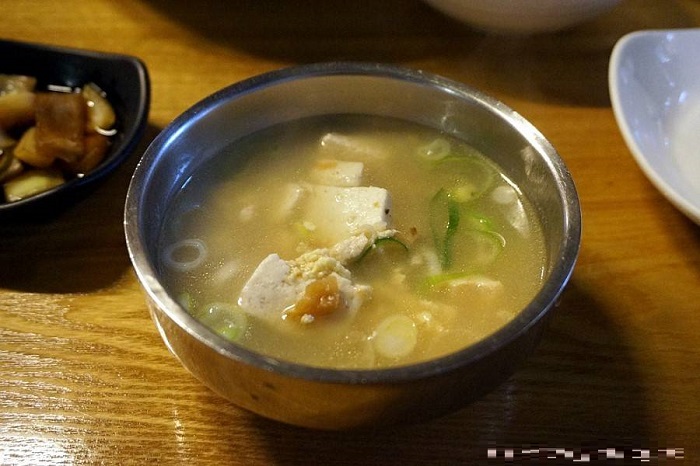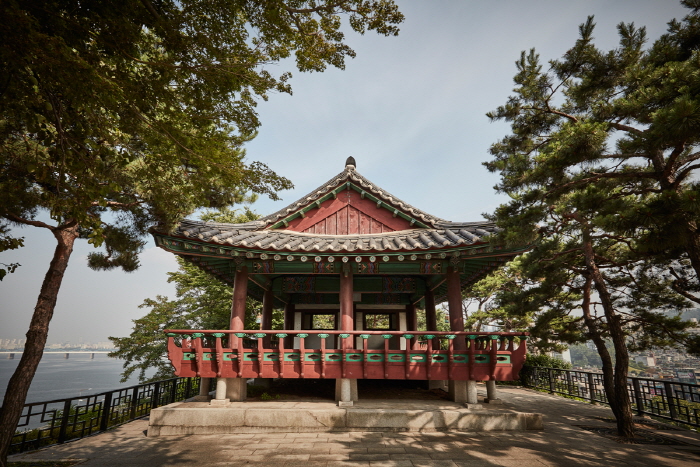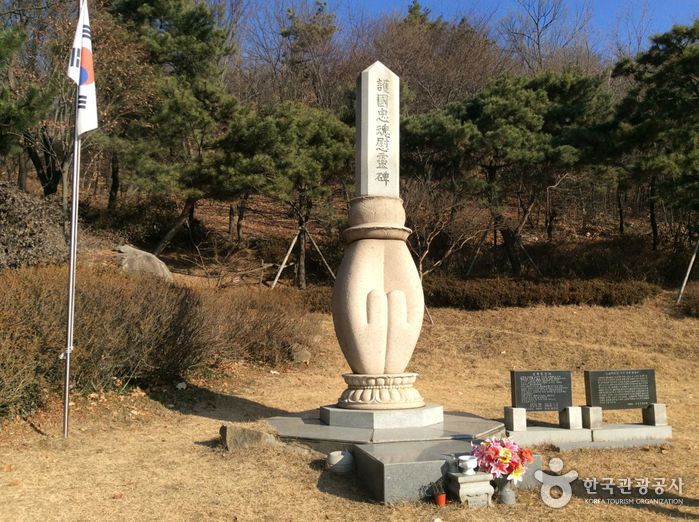Daeseonggwan - Daebang-dong Branch (대성관 대방동)
10.7Km 2021-03-27
204-1, Yeouidaebang-ro, Dongjak-gu, Seoul
+82-2-815-0567
With a variety of Chinese dishes, it has a large space ideal for groups. The best menu at this restaurant is stir-fried meatballs and vegetables. This Chinese (cuisine) restaurant is located in Dongjak-gu, Seoul.
Olive Young - Hannam Ogeori Branch [Tax Refund Shop] (올리브영 한남오거리)
10.7Km 2024-04-16
1F, 65-1, Dokseodang-ro, Yongsan-gu, Seoul
-
Bubu Yoridan (부부요리단)
10.7Km 2024-02-15
1F, 25-1 Dokseodang-ro 40-gil, Seongdong-gu, Seoul
Bubu Yoridan is a Korean restaurant conveniently situated just 20 minutes away from the Itaewon Special Tourist Zone. Managed by a chef couple with a background in hotel dining, the restaurant specializes in an array of delectable seafood dishes. The standout menu item is the jin hwangje jjim (boiled pork slices and spicy braised seafood), a dish featuring Wando wild octopus, three abalones, and boiled black pork slices. Nearby attractions include Yongsan Park, the National Museum of Korea, the National Theater of Korea, and the Namsan Seoul Tower.
Hannam Bugeotguk (한남북엇국)
10.7Km 2021-03-24
65-7, Dokseodang-ro, Yongsan-gu, Seoul
+82-2-2297-1988
It's a popular bar with pancake as its specialty. This restaurant's signature menu is dried pollack soup. This Korean dishes restaurant is located in Yongsan-gu, Seoul.
Hyosajeong Pavilion (효사정)
10.8Km 2025-01-13
55, Hyeonchung-ro, Dongjak-gu, Seoul
+82-2-820-9848
Hyosajeong Pavilion is where Nohan, the second vice premier of the Joseon dynasty during King Sejong and King Sejo’s reign, stayed. After he lost his mother, he built the pavilion to mourn at her grave while still being able to see his father’s grave in Gaeseong to the North. His brother-in-law, then Minister of the Interior, Gang Sa-deok named the pavilion “Hyosajeong,” which means pavilion of filial piety.
In order to find the original location of the pavilion, poems by Jeong Inji and Seo Geojeong and an old map of Korea were referenced, but the pavilion was not found because the surrounding landscape had changed too much. As a result, a location was selected and the pavilion was reconstructed at its current location. The house is 3 kan* in the front and 2 kan* on the side. The roof is a hip-and-gable roof. The pavilion has one room with under floor heating and a railing around the pavilion
(* kan: a traditional measurement that corresponds to the space between two columns)
Memorial to the Loyal Dead (호국충혼위령비)
10.8Km 2025-01-13
56-33, Gaehwadong-ro 13-gil, Gangseo-gu, Seoul
+82-2-2125-0848
When the fate of the nation was hanging by a thread as the North Korean Army launched an invasion of the South on June 25, 1950, about 1,100 officers and men from
the South Korean First Division's 11th, 12th, and 15th regiment retreated to Gimpo and built the last line of defense on Gaehwasan Mountain from June 26 to 30 to fight against a large army
of North Korean soldiers disguised as South Korean men.
Unfortunately, their communication with the headquarters was
cut off and their supply of ammunition and food ran out. As a result, the entire South Korean force was killed by the much larger North Korean army
in a valley around Gaehwasan Mountain. In order to commemorate those who died for the country, the government established the
Memorial to the Loyal Dead on Gaehwasan Mountain in 1994. A memorial service is
also held here annualy on June 28th.
x_height: 4.7 meters high
Built by the First Division of the ROK Army, Mitasa Temple
Olive Young - Geumho Branch [Tax Refund Shop] (올리브영 금호)
10.8Km 2024-04-18
302, Dokseodang-ro, Seongdong-gu, Seoul
-
Himart - Yongdu Branch [Tax Refund Shop] (하이마트 용두점)
10.8Km 2024-04-18
414, Gosanja-ro, Dongdaemun-gu, Seoul
-
![Adidas [Tax Refund Shop] (아디다스)](http://tong.visitkorea.or.kr/cms/resource/78/3313478_image2_1.jpeg)
![Le Coq Sportif [Tax Refund Shop] (르꼬끄)](http://tong.visitkorea.or.kr/cms/resource/07/3314607_image2_1.jpeg)

![Olive Young - Hannam Ogeori Branch [Tax Refund Shop] (올리브영 한남오거리)](http://tong.visitkorea.or.kr/cms/resource/48/2889448_image2_1.jpg)




![Olive Young - Geumho Branch [Tax Refund Shop] (올리브영 금호)](http://tong.visitkorea.or.kr/cms/resource/65/2878765_image2_1.jpg)
![Himart - Yongdu Branch [Tax Refund Shop] (하이마트 용두점)](http://tong.visitkorea.or.kr/cms/resource/50/2889950_image2_1.jpg)
 English
English
 한국어
한국어 日本語
日本語 中文(简体)
中文(简体) Deutsch
Deutsch Français
Français Español
Español Русский
Русский